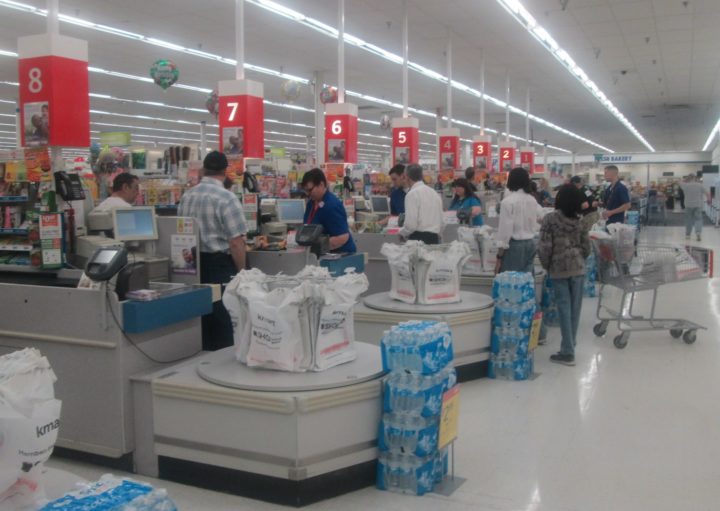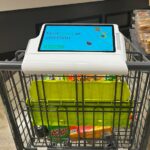
Have you ever been in a grocery store checkout line, only to find that the person in front of you has a whole stack of coupons and is going to make the whole checkout process take forever?
Or maybe you’re the one with all the coupons, and getting dirty looks from everyone behind you in line.
Either way, IBM thinks it has a solution. The computer company has invented a system that would help ensure you never again have to wait around unnecessarily for your turn at the checkout, by using cameras and other methods of detection to determine the items you have in your cart, the coupons you have in your hand and even the expression on your face, to determine the most efficient way to get you through the checkout and out the door.
The system is described in a newly-published patent application entitled “Multiple Point of Sale Overall Wait Time Optimization.” It attempts to automate what stores and shoppers currently do on their own – such as opening a new checkout lane when a line gets too long, or gauging how full your fellow shoppers’ carts are, or how fast the cashiers are, when choosing a checkout lane.
The system would direct shoppers to a specific checkout lane based on the anticipated “difficulty factor” of their transaction and the transactions of those ahead of them in line. The first component of the system involves cameras that would detect what specific items are in your shopping cart. If you have just a few items, your checkout will likely go quickly and smoothly. If you have more items, it will take more time. And if you have several heavy, bulky items that will require more effort on the part of your cashier, you might be routed to your own dedicated checkout lane so no one gets stuck behind you.
But the sensors are not limited to just cameras. The system also describes “odor sensors” that would be used “to detect aromas from fresh fruits and vegetables.” Loose produce takes a little longer for cashiers to ring up, so the smell sensors would take that into consideration when determining your checkout’s difficulty factor.
If that seems a little overkill – it’s only the beginning. The system can also consider your propensity to use coupons, or write checks, or anything else that might add to the level of checkout difficulty. You can specify in advance whether you plan to use coupons, or the system might be able to access your customer ID and purchase history to determine whether you’re likely to use coupons. If you are, the system will make sure a shopper with a less complex transaction doesn’t get put in line right behind you.
The most unusual, or possibly creepiest, part of IBM’s invention involves having its cameras watching you. To determine how well its system of efficiently distributing shoppers to different checkouts is working, cameras will be trained on shoppers in the checkout line “to identify any change of facial expression, gesture, or skin luminescence of any individual shopper that indicates the shopper considers the checkout system efficiency… to be less than expected,” the patent documentation explains.
That is to say, if you’re frowning, sighing, crossing your arms, or so angry that you’re red in the face – the system will be able to recognize that your checkout line may be moving too slowly and that it may need to direct you to a faster lane.
So if you’ve ever found yourself standing in a long checkout line, wishing you had chosen the lane next to you that seems to be moving so much faster, relief may be on the way. And if you’ve ever been behind a shopper who pulled out a fistful of coupons that need to be scanned – or have ever seen the look on fellow shoppers’ faces when you pulled out a fistful of coupons ahead of them in line – this system could help keep things moving along much more smoothly. Then the couponers will be able to save money, the non-couponers will be able to save time, and everyone’s happy. Or at least, as happy as you can be waiting in line to pay for your groceries.
Image source: Random Retail













